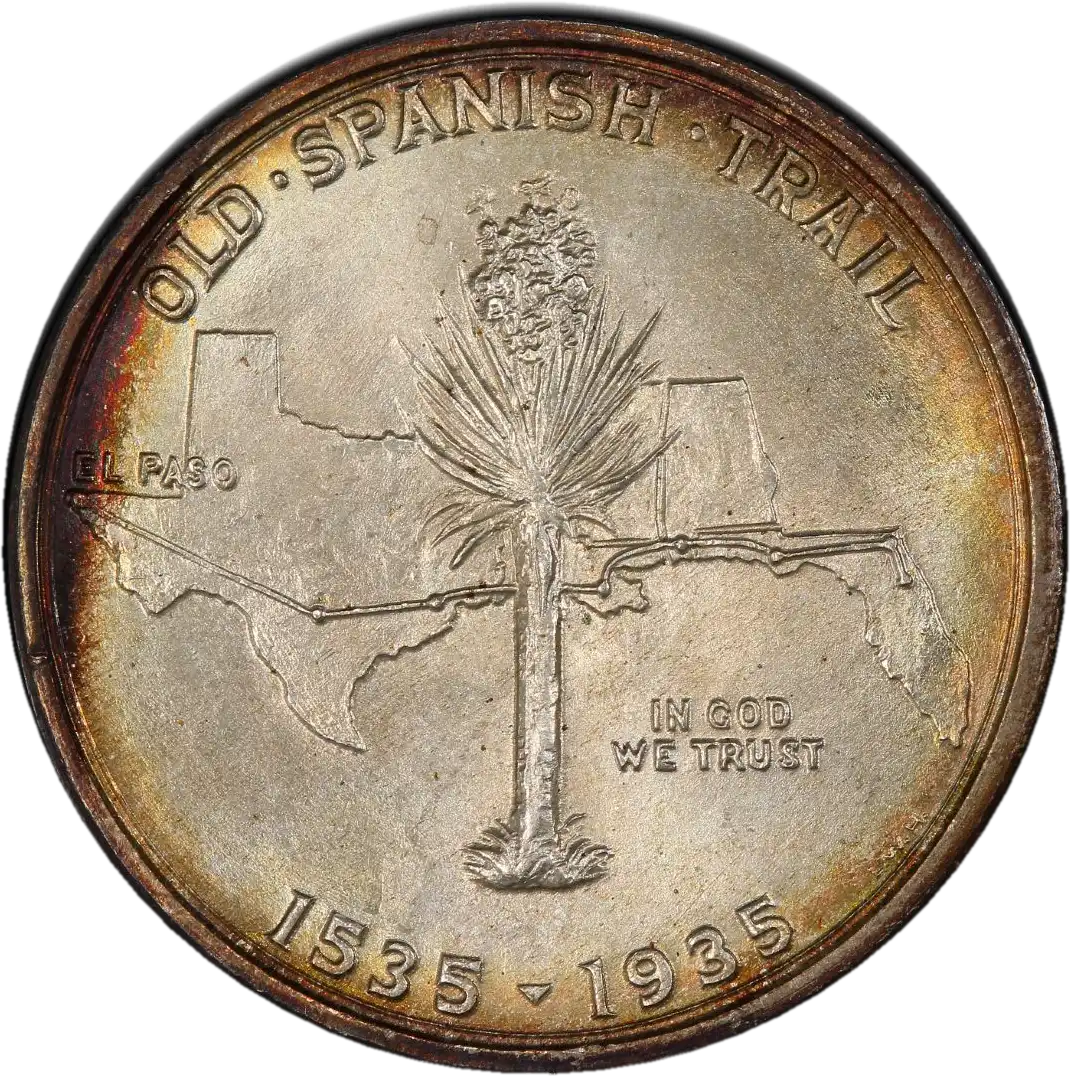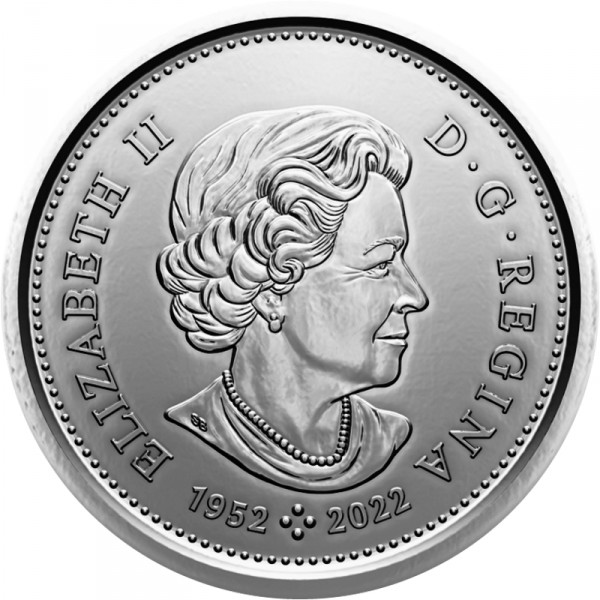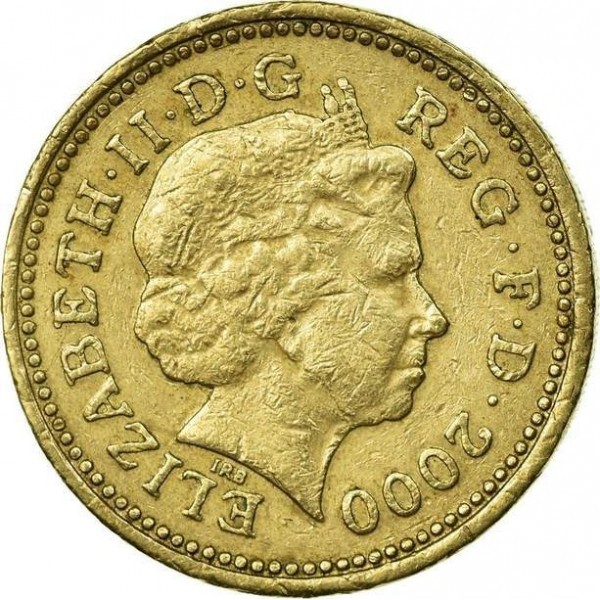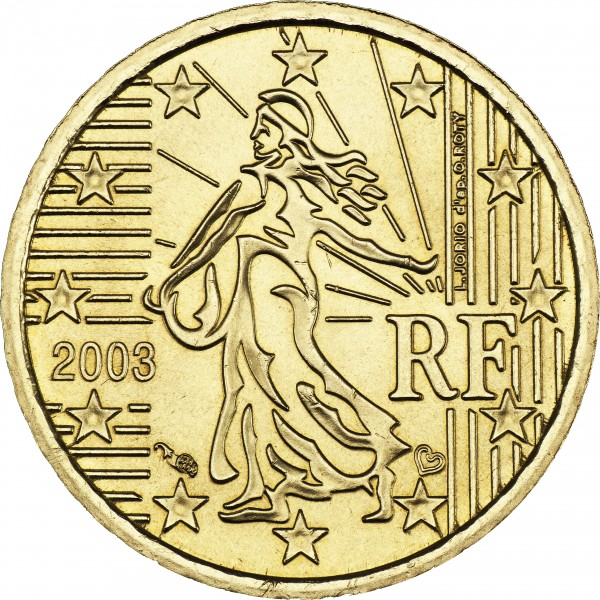USA ½ dollar Old SpanishTrail 1935
USA, Philadelphia


Rarity
Extremely Rare
Attributes of Coins
| Melt Value | $22.90 11.25g Silver |
|---|---|
| Region | USA |
| Denomination | ½ dollar |
| Krause number | KM# 172 |
| Mintage | 10,008 |
| Metal | Silver 0.900 |
| thickness | 2 mm |
| diameter | 30.6 mm |
| weight | 12.5 g |
Obverse:

ALVAR NUÑEZ CABEZA DE VACA
E PLURIBUS UNUM
HALF DOLLAR
LIBERTY
UNITED STATES OF AMERICA
Reverse:

Geography
1535
1935
EL PASO
IN GOD WE TRUST
OLD SPANISH TRAIL
Introduction of Coins
The Spanish Trail Memorial half dollar was simply another money-making scheme by L. W. Hoffecker, a Texas coin dealer and future ANA president. After a commemorative coin he tried to have made honoring the Gadsden Purchase was vetoed by the President, Hoffecker set out on a search for another event to commemorate. In his position as Chairman of the El Paso Museum Committee, he found the event he was looking for. Rewriting history to suit his own ends, Hoffecker claimed that El Paso was the end of the Old Spanish Trail traveled by early explorer Alvar Nunez Cabeza de Vaca and the remnants of an 1527 Spanish expedition. This was not really the case, but apparently that didn’t bother Congress, as a bill was passed on June 5th, 1935 authorizing a maximum of 10,000 half dollars commemorating the trail. Hoffecker, in addition to inventing the need for the coin, also had a specific design in mind for it. He hired local El Paso sculptor Edmund J. Senn to execute his plans. Hoffecker was clearly no artist, and his designs are one of the most widely criticized of any commemorative coin. The obverse displays a cow’s head as the central device, apparently a metaphor for Cabeza de Vaca, which translates in Spanish to “head of a cow.” Directly above the cow’s head on the coin’s obverse is the legend LIBERTY and above that, the motto E PLURIBUS UNUM. Below is the explorer's name ALVAR NUNEZ CABEZA DE VACA. Encircling the rim are the inscriptions UNITED STATES OF AMERICA and HALF DOLLAR. The reverse displays a map of the southern United States from Florida through Texas with the fictionalized Spanish Trail marked off across five states, ending at EL PASO. Continuing his disregard for historical accuracy, Hoffecker designated stops along the trail at cities that did not exist in the early 16th century. Superimposed on the map is a blooming yucca tree, a common plant in the desert regions of the southwestern United States. At the bottom of the reverse are the two dates 1535 and 1935. The legend OLD•SPANISH•TRAIL appears at the top border and the motto IN GOD WE TRUST is to the right of the yucca tree. The full authorized mintage of 10,000 coins was struck in September of 1935 at the Philadelphia Mint. They were distributed by the El Paso Museum Committee for $2 each, a hefty sum at the time for a coin with a face value of 50 cents. There was definitely some favoritism involved in the sale of the coins, but they still ended up being distributed widely, mostly to collectors.Read More













